Driving through Europe is an exhilarating way to explore the continent, offering the freedom to discover charming villages, stunning landscapes, and vibrant cities at your own pace. In theory, the Schengen Area allows you to drive from the Arctic to the Mediterranean without so much as a passport check.
However, driving requirements can vary depending on whether you are in an EU country or not. EU citizens primarily need a valid driving license, while non-EU citizens may require additional documentation such as an International Driving License.
Please be aware that road conditions vary widely throughout europe. Most major roads in northern and western europe are in very good condition, though minor roads may not be well-built or maintained, going further south. In rural areas, poorer countries and in extreme climates with thigh temperature changes, even major roads may show potholes, and some may not be paved – the more remote you get, the more likely to find such roads. And keep in mind that in winter and spring, driving can be challenging because of snow and ice, especially in the extreme north, in the mountains, and on rural roads.
Here’s everything you need to know to make your driving experience smooth and enjoyable.
Before embarking on your European driving adventure, it’s essential to plan and prepare thoroughly. Here are some key considerations to keep in mind:
Research the Specific Countries: Each European country has its own unique driving laws and regulations. Spend some time researching the countries you’ll be visiting to familiarize yourself with their specific rules. This will help you avoid any surprises on the road.
Valid Driving Licence and IDP: Ensure you have a valid driving licence from your home country. If you’re a non-EU citizen, you might also need an international driving permit (IDP). This is especially important if your licence is not in the Roman alphabet. Check with your local automobile association to obtain an IDP.
Rental Company Requirements: When booking your rental car, check with the car rental company for any specific requirements or restrictions for driving in certain European countries. Some rental companies may have policies regarding cross-border travel, so it’s best to clarify these details in advance.
Travel Insurance: Consider purchasing travel insurance that covers driving in foreign countries. This can provide additional peace of mind in case of accidents or other unforeseen events.
Vehicle Condition and Safety Features: Make sure your rental car is in good condition and equipped with necessary safety features. This includes a first-aid kit, a spare tire, and other essential items. It’s always better to be prepared for any situation.
Route Planning and Accommodations: Plan your route in advance and book your accommodations and rental cars accordingly. This will help you stay organized and ensure a smooth journey.
Weather Forecast: Check the weather forecast for your destination and plan accordingly. Weather conditions can vary significantly across Europe, so it’s important to be prepared for anything from sunny days to snowy roads.

Your valid driver’s license from your home country is all you need to hit the road in Europe. Many European countries require you to have held this license for at least one year. Do not forget to ensure your driving licence is valid for the duration of your stay in Europe.
Non-EU citizens may need an International Driving Permit (IDP) in addition to their valid driving licence. While not always required, obtaining an IDP is a simple process through your local automobile association. This document is recommended if your license is not in the Roman alphabet, ensuring smooth interactions with local authorities. UK citizens with a paper driving licence might need to obtain an International Driving Licence when driving in EU countries.
Check if your car insurance covers you to drive abroad.
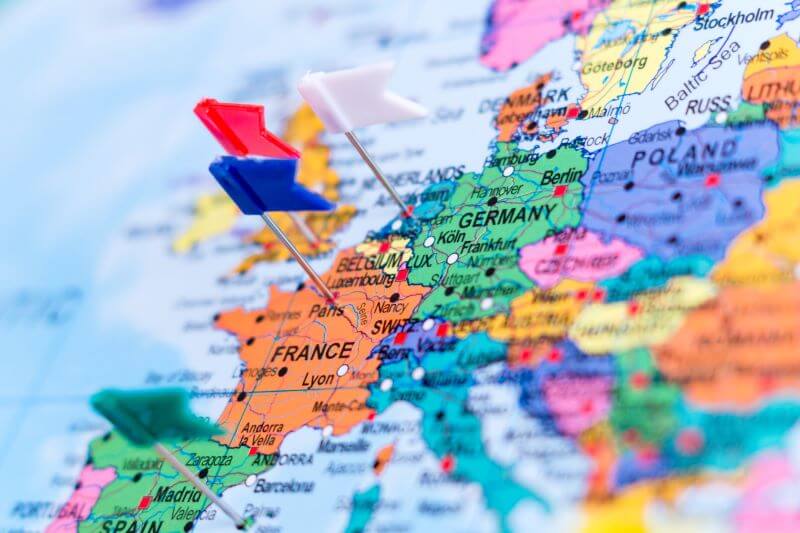
Europe is a continent with many different countries. While the freedom to travel without border controls is certainly one of the greatest achievements of the European Union, there is no absolute harmonisation of the laws and rules that apply to road traffic.
Most European countries drive on the right side of the road, unlike the UK, Ireland, Cyprus and Malta which drive on the left. This means you’ll be navigating roundabouts in an anti-clockwise direction, adding a little thrill to your journey. Embrace this difference as an opportunity to experience the local driving culture. Once you get the hang of it, you’ll feel like a local, zipping along the scenic routes and enjoying the beautiful views. But as you can see, that is the exception rather than the rule in Europe. In most places, you will drive on the right.
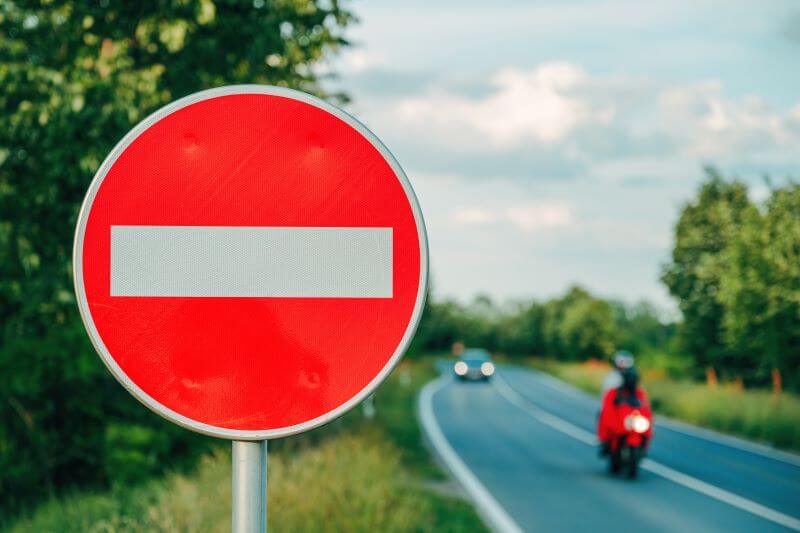
There are a few aspects that help you to find your way when driving in Europe and travelling across borders.
Road signs are generally less text-heavy than in the USA, for example. To ensure that they work everywhere regardless of language barriers, there are symbols whose meanings are the same everywhere in Europe. The design may differ in detail, but the signs remain easily recognisable even with marginal differences.
If you are travelling from outside the EU, briefly familiarise yourself with the most important warning signs, directional signs, and informational signs. This will make you feel much safer when driving.
Also, in most countries where drivers drive on the right, the basic rule of right before left applies. If there are no signs or traffic lights regulating the right of way, you are well advised to follow this rule.
The left hand lane is for passing only – it is not a “fast lane” but a “passing lane”. If you find yourself cruising in the left lane, it’s time to move over and let faster drivers pass. Not only will this keep you in good standing with local drivers, but it also enhances the overall flow of traffic.
The rule in short: if possible (if you are not overtaking) you must drive on the right-hand side of three-lane or multi-lane roads. (If you are driving on a three-lane road, you may use the middle lane if there are vehicles on the right-hand lane from time to time – in other words, if you are constantly overtaking other road users.) And, just to mention it: It’s illegal to overtake on the right.
Observe speed limits, which vary by country and road type. Be cautious of stationary radar traps used for speed enforcement. These traps are common in many countries, and fines can be hefty. Always adhere to speed limits and be aware of local traffic laws to avoid penalties.
Here too, you are well advised to find out about the general speed limits in your destination country in advance. For example, signs at the entrance to towns often include an automatic speed limit without this being explicitly signposted when you enter the town.
No “Right on Red”: Unlike in North America, it is not allowed to turn right at a red light in Europe. Unless there are signs to the contrary (which are rare), you must wait for a green light before you are allowed to turn right. This rule ensures the safety of all drivers, especially cyclists and pedestrians. Think of it as a moment to take in the sights and sounds of the vibrant streets around you.
Wear your seatbelt at all times while driving!
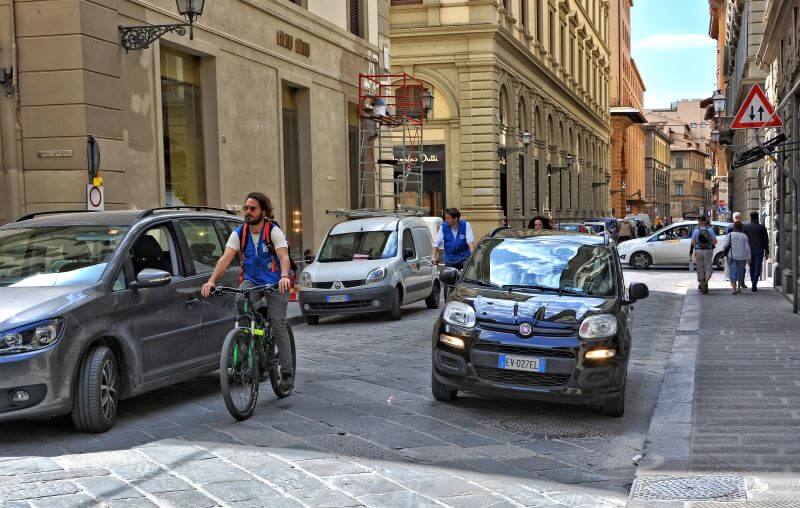
Driving in Europe can be a unique and exciting experience, but it’s essential to be aware of the local culture and customs. Here are some key considerations to keep in mind:
Driving Style: In many European countries, driving can be more aggressive and fast-paced compared to the US. Be prepared for oncoming traffic and assertive drivers. Stay calm and confident, and always follow local traffic laws.
Driving on the Left: In some European countries, such as the UK, Ireland, Cyprus, and Malta, drivers drive on the left-hand side of the road. If you’re not used to this, take some time to adjust your driving habits accordingly.
Pedestrians and Cyclists: In many European countries, pedestrians and cyclists have priority over cars. Always yield to pedestrians and cyclists, and be mindful of their presence on the road. This is especially important in urban areas and near schools.
Historic City Centers: In some European countries, such as Italy and Spain, driving in historic city centers is restricted. These areas often have narrow streets and limited access for vehicles. Research local traffic laws and restrictions before driving in these areas to avoid fines and ensure a smooth journey.
Toll Roads: Toll roads are common in many European countries. Be sure to research which roads are toll roads and how to pay. Keep enough loose change and cash in the correct currency to cover toll costs, as not all toll booths accept credit cards.
Speed Limits and DUI Laws: European countries have strict laws regarding speed limits and driving under the influence. Always adhere to local speed limits and never drive under the influence of alcohol or drugs. This will help you stay safe and avoid hefty fines.
Just keep in mind that customs and rules differ from place to place. If you can adapt a relaces approach, there is no reason why driving in Europe would bear any issues.
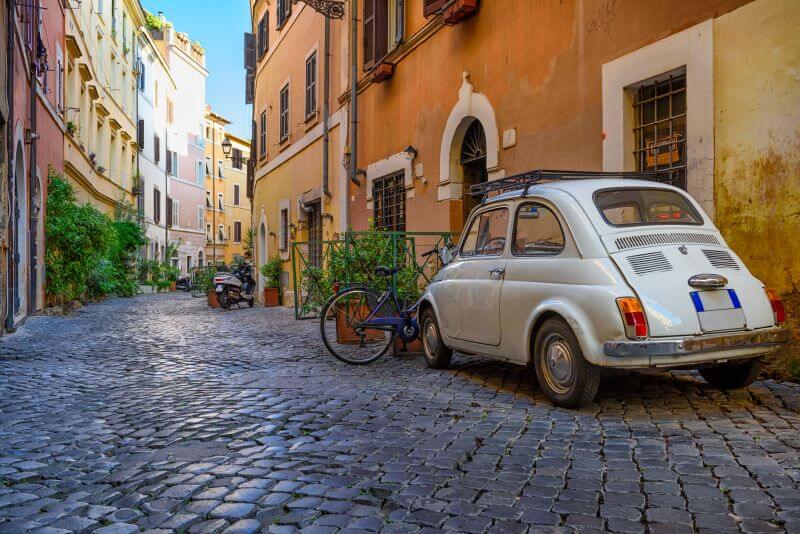
In many European countries, drivers of cars and motorcycles must switch on their dipped headlights or daytime running lights all year round, even during the day and on all roads. Anyone who fails to comply with the lighting obligation risks a fine.
Countries with a lighting obligation are Bosnia-Herzegovina, Bulgaria, Denmark, Estonia, Finland, Iceland, Italy, Latvia, Lithuania, North Macedonia, Montenegro, Norway and Sweden. In all countries where lights must be used during the day, dipped headlights may be used. In the Scandinavian countries, Switzerland, Croatia, Italy and Romania, daytime running lights may also be used.
It’s also a legal requirement to adjust your headlights so you don’t dazzle oncoming drivers when driving on the right side of the road. If you are renting a car, make sure to go over this and make adaptions right from the beginning. Taking this small step not only keeps you compliant with local laws but also contributes to safer roads for everyone.
Many European cities have zones that restrict or limit access to certain drivers, especially tourists, in city centres to manage traffic congestion. For example, Italy has ZTL (Zona a traffico limitato) which prevents non-locals from driving in town centres during certain times.
Embrace this as a chance to explore the city on foot or use public transport, allowing you to soak in the local culture without the stress of driving. Plus, you’ll discover hidden gems that you might have missed while driving!
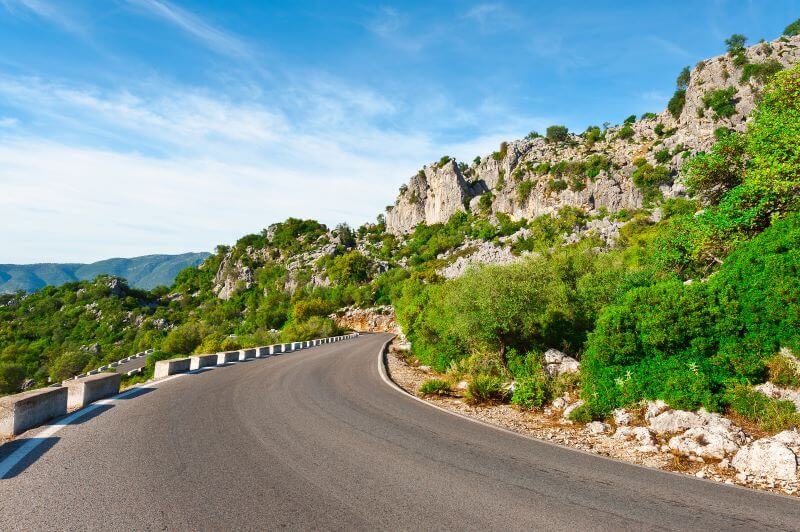
Before you go, it might be a good thing to understand the different road classifications, such as motorways, primary roads, secondary roads, and local roads.
Roundabouts are a common sight in Europe, and they can be a lot of fun once you understand how to navigate them. Roundabouts help keep traffic moving smoothly and can be found in all shapes and sizes. Ensure you fully understand how to enter and exit a roundabout in the country you are travelling in and follow proper roundabout etiquette. If you miss your exit, don’t worry—just circle around again and take it at your leisure!
Many European countries have toll roads where you pay at a gate to use them. Those roads can be a great way to travel quickly between destinations as they are often well-maintained and provide a faster route to your next adventure. Keep enough loose change and cash in the correct currency to cover toll costs, as they can add up quickly. Please be aware that the euro is not used in all European countries. Some countries still have their own local currencies.
Of course you can and should use a GPS or map to navigate unfamiliar roads. Just be aware that these systems are not infallible. Even if the navigation system suggests it, it is not a good idea to drive your car into a pedestrian zone. It is therefore advisable not to follow the computer blindly.
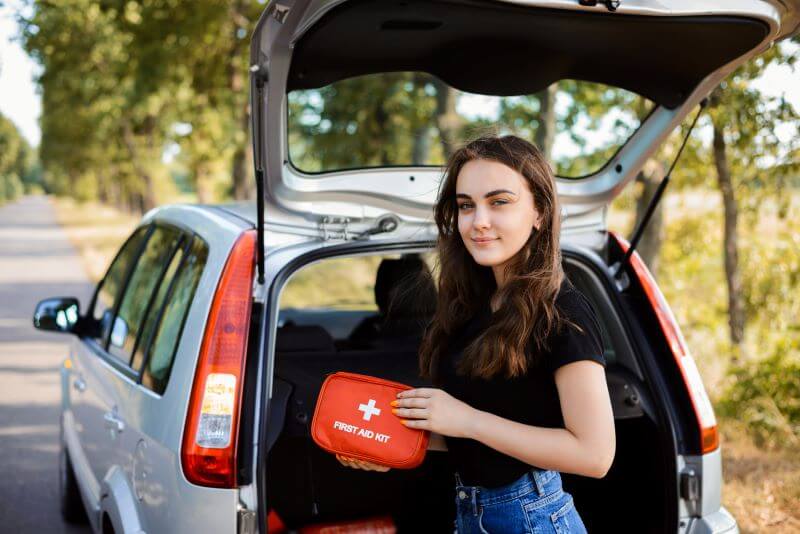
While driving in Europe is generally safe and enjoyable, it’s important to be prepared for any unexpected situations. Here are some essential emergency procedures to keep in mind:
Know What to Do in Case of an Accident: If you find yourself in an accident, remain calm and ensure everyone’s safety. Exchange details with the other drivers involved, including names, contact information, and insurance details. It’s also crucial to report the incident to the police, especially if there are injuries or significant damage. Having a clear record of the event will help with any claims or legal matters.
Carry a Warning Triangle and a Fluorescent Jacket: In the event of a breakdown, having a warning triangle and a fluorescent jacket is not just a good idea; it’s often a legal requirement in many European countries. Place the warning triangle at a safe distance behind your vehicle to alert other drivers, and wear the fluorescent jacket to ensure you are visible while you assess the situation.
Keep an Emergency Kit: Prepare an emergency kit with essentials that can come in handy during unexpected situations. Include a first aid kit, a map (in case your GPS fails), a phone charger, and any other items you might need. Having these supplies on hand will give you peace of mind and help you feel more secure while exploring the open road.
When driving in Europe, it’s important to be prepared for potential interactions with law enforcement. While police officers are generally there to ensure everyone’s safety, knowing what to expect can help you handle these situations with confidence.
Know What to Do if You Are Stopped: If a police officer signals for you to pull over, remain calm and find a safe place to stop your vehicle. Have your driving license and vehicle registration document ready to present to the officer. Remember, they are there to maintain order on the roads. Just answer any questions truthfully, and follow their instructions. If you are unsure about something, for course you can ask for clarification.
Understand Local Rules: Each European country has its own rules and regulations when it comes to interacting with police and authorities. Before your trip, familiarize yourself with the common practices in the countries you plan to visit. This will help you respond appropriately and avoid any misunderstandings.
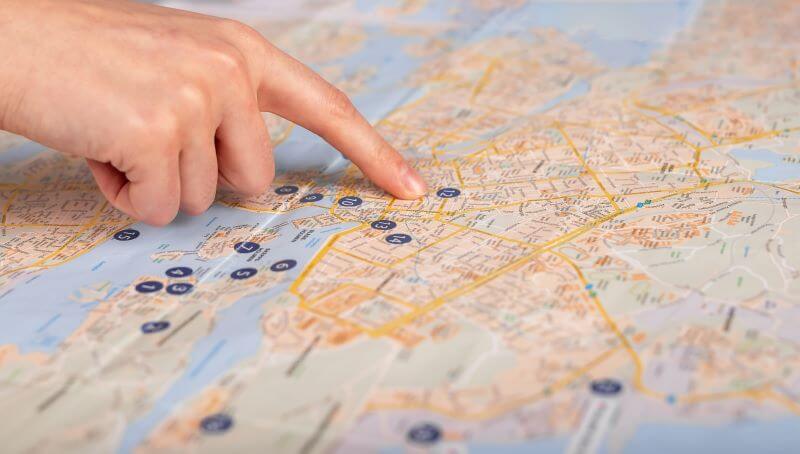
Before you hit the road, familiarize yourself with the different fuel types available in the European country you plan to visit. Most countries offer petrol (gasoline), diesel, and sometimes alternative fuels like LPG.
Prices can vary significantly from one country to another, so it’s a good idea to check current fuel prices online or use apps that provide real-time data. Knowing where to find the best prices can help you save money for more adventures!
Parking in urban areas can be challenging, but with a little research, you can find convenient options. Many cities offer public parking garages, street parking, and designated parking zones.
Be aware that parking fees can vary widely, so check local regulations to avoid fines. Some cities also have parking apps that allow you to pay for parking directly from your phone, making it easier to manage your time and budget.
Additionally, consider looking for accommodations that provide parking options, so you can explore the city without worrying about your vehicle.
Some countries require a vignette (a sticker indicating payment of road taxes) for driving on highways. These can usually be purchased at border crossings or gas stations, making it easy to comply with local regulations
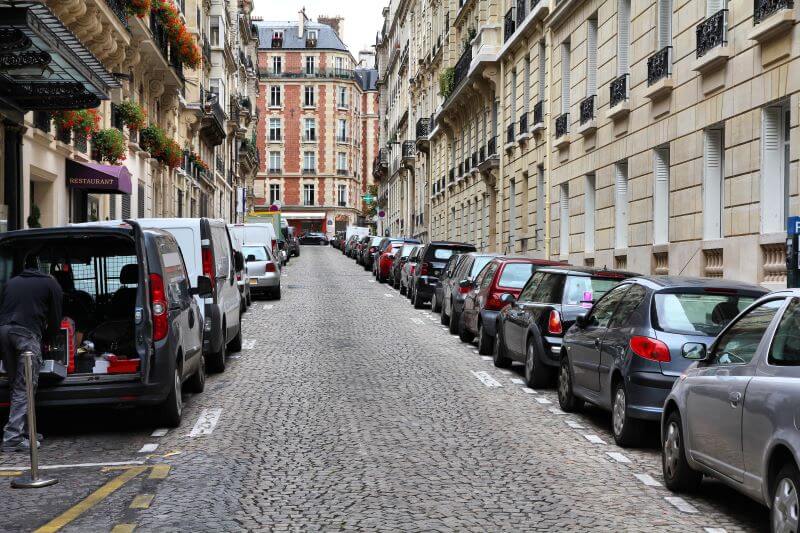
Renting a car in Europe is a nice way to explore the continent at your own pace and discover hidden gems off the beaten path. Book your rental car in advance to ensure availability and get the best rates, and, if possible compare the conditions in different countries you want to got to. The rates may differ widely!
NOTE: Compared to North America, you should be prepared for smaller cars, and most of them have manual transmission. Don’t expect an automatic without requesting one when placing your order (and often paying extra).
Please remember: Even though the car is a European invention, many European cities were already here before the car came along. While the car ist a good means to take between cities and places that are farther apart, going into the some of the city centres with a car is not always the best idea. These old cities that have existed for a very long time are not designed for car traffic. Expect narrow streets and slow moving trafic, and choose a car of a reasonable size. The bigger the car, the less fun you will have driving in the cities and searching for a suitable parking space.

To ensure a smooth rental experience, here are the main requirements travellers should be aware of:
Minimum Age: Most rental companies welcome drivers as young as 21 years old, allowing you to embark on your European road trip adventure. However, some countries may have a higher minimum age of 25 for certain vehicle categories.
Young Driver Surcharge: If you’re under 25, you may be subject to a small additional fee, typically ranging from €15 to €40 per day.
Maximum Age: While most countries have no restrictions, a few may require additional documentation or insurance for drivers over 70 or 80 years old. This ensures everyone can enjoy the open road safely.

Check the rental car’s insurance coverage and consider purchasing additional coverage. Also ensure the rental car company provides a valid vehicle registration document (V5) and a European driving kit.
Third-Party Liability Insurance: This is mandatory in Europe, and rental cars usually come with basic coverage. However, consider purchasing additional protection, such as collision damage waiver (CDW) and theft protection, for complete peace of mind on your European road trip.
If you plan to drive your rental car across national borders, discuss this with your car rental company beforehand! Because this might not be permitted by every rental company. Make sure to ask in order to avoid trouble.

Now you can confidently get into a car and explore Europe’s stunning landscapes and charming towns at your own pace. Driving through Europe opens up a world of possibilities, allowing you to create your own itinerary and discover hidden treasures along the way. With a little preparation, you’ll be ready to embark on an unforgettable road trip adventure. Happy travels!